Introduction to Mini Motorcycles
Mini motorcycles are small, fun-sized versions of their larger counterparts. They are known for their compact size, ease of use, and affordability. Ideal for beginner riders, mini motorcycles often serve as an excellent introduction to the world of motorcycling. Whether for recreation, learning, or even commuting, these micro-machines offer a unique riding experience. They vary in design, from replicas of full-sized bikes to distinctive mini-bikes with a character of their own. When considering a mini motorcycle, think about your riding needs, your experience level, and the intended use—be it for casual rides around the neighborhood or more adventurous off-road thrills. Even though they are small, choosing the right mini motorcycle requires careful thought about features, size, and safety. Throughout this guide, we will delve into what you need to know about mini motorcycles, making your decision as smooth as your future rides.
Types of Mini Motorcycles
Mini motorcycles come in several forms. Each type offers unique features. As you shop, consider the following types:
Pocket Bikes
Pocket bikes are small and powerful. They feature a sleek design. Often used for racing, they can still suit casual riders.
Dirt Bikes
Designed for off-road use, mini dirt bikes have robust tires and suspension. They are perfect for adventure seekers.
Pit Bikes
Pit bikes are a midpoint between pocket bikes and dirt bikes. They are versatile and good for various riding styles.
Scooters
Mini scooters provide comfort and storage. They are ideal for commuting and easy rides.
Electric Mini Bikes
Electric mini bikes offer a quiet, eco-friendly experience. They have less maintenance and are simple to operate.
When choosing a mini motorcycle, think about where and how you will ride. Each type caters to different needs and skill levels. Make sure to select a mini motorcycle that aligns with your intended use. Consider the performance and design that suits your personal preference. Always remember, no matter the type, safety and proper handling should be your top priority.
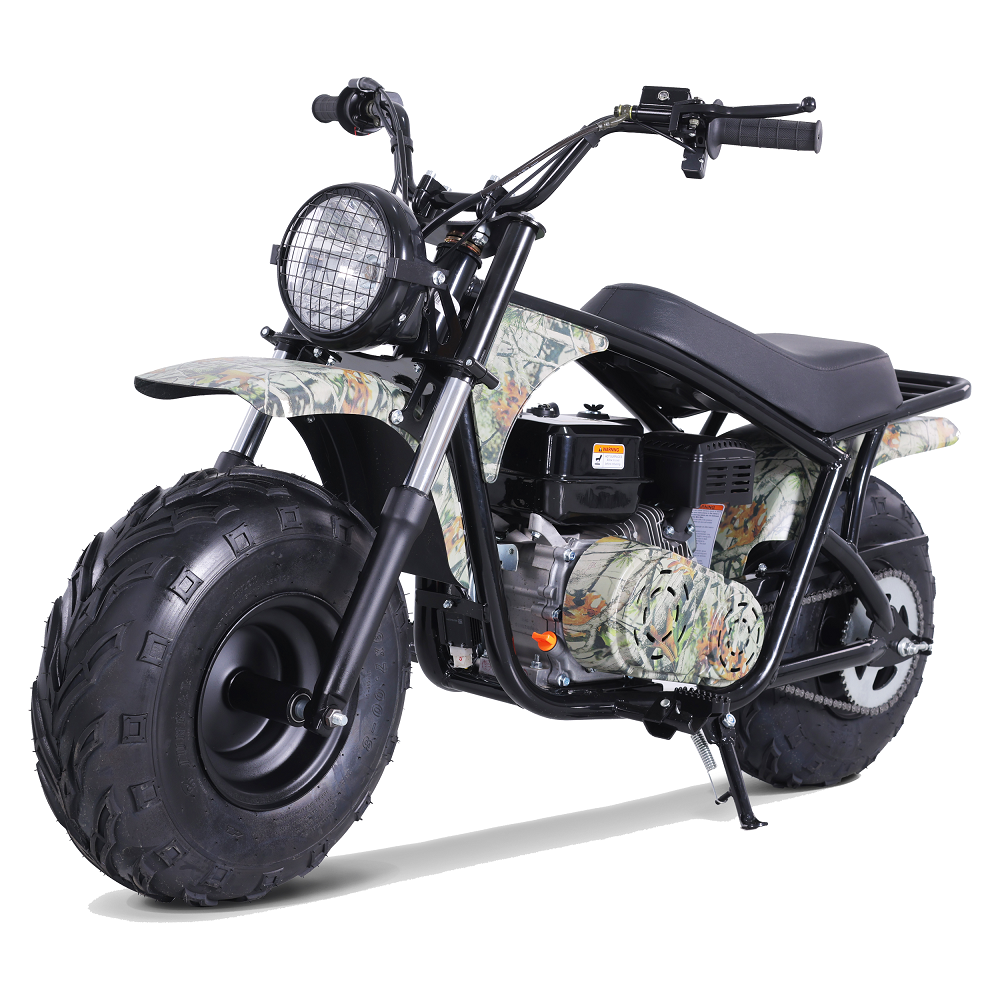
Important Features to Consider
When shopping for a mini motorcycle, key features are crucial for a good fit and safe ride. Here’s what to focus on:
- Performance. Assess the power and speed. Is it enough for your intended use?
- Comfort. Check the seat design and ergonomics. Will you be comfortable during rides?
- Durability. Look for robust construction that can withstand regular use.
- Fuel Efficiency. Consider how long a tank will last, especially if using your mini motorcycle for commuting.
- Braking System. Reliable brakes are a must for safety—look for disc brakes if possible.
- Suspension System. A good suspension provides a smoother ride, especially on uneven surfaces.
- Tire Quality. Durable tires with good traction are essential for both on-road and off-road adventures.
- Ease of Use. The simpler to operate, the better—especially for beginners.
- Accessories. Reflect on any additional features like storage compartments or custom bodyworks.
Prioritize these features based on how you plan to use your mini motorcycle. They will impact enjoyment, performance, and safety. Keep your skill level in mind to ensure that the mini motorcycle is a perfect match for your abilities. Remember, it’s wise to invest in a model that not only fits your current needs but can also grow with you as your proficiency increases.
Size and Weight Considerations
When eyeing a mini motorcycle, size and weight play significant roles. The right size ensures comfortable riding, while the weight impacts handling and transport.
Assessing Mini Motorcycle Size
You should first stand over the bike. Your feet must touch the ground on both sides. This ensures stability when you come to a stop. The bike’s height and seating position should sync with your body dimensions. A misfit in size could lead to uncomfortable rides or challenges in control.
Understanding Weight Impact
A lighter mini motorcycle is easier to maneuver and handle, especially for beginners. It also means you can move and store it with less effort. However, weight can provide stability, so consider your riding environment. Will you be riding in windy conditions or on uneven terrain? A slightly heavier model might serve you better in such scenarios.
Making Balanced Choices
Find a balance between comfort and control. Sit on the bike to gauge if you can maintain an upright posture without strain. The motorcycle’s weight should not overwhelm your physical capability. Remember, you will need to push, steer, and sometimes lift your mini motorcycle.
Adhering to these size and weight considerations when selecting your mini motorcycle will enhance your overall experience. Opt for a model that gives you ease of handling and matches your physique for a better ride.
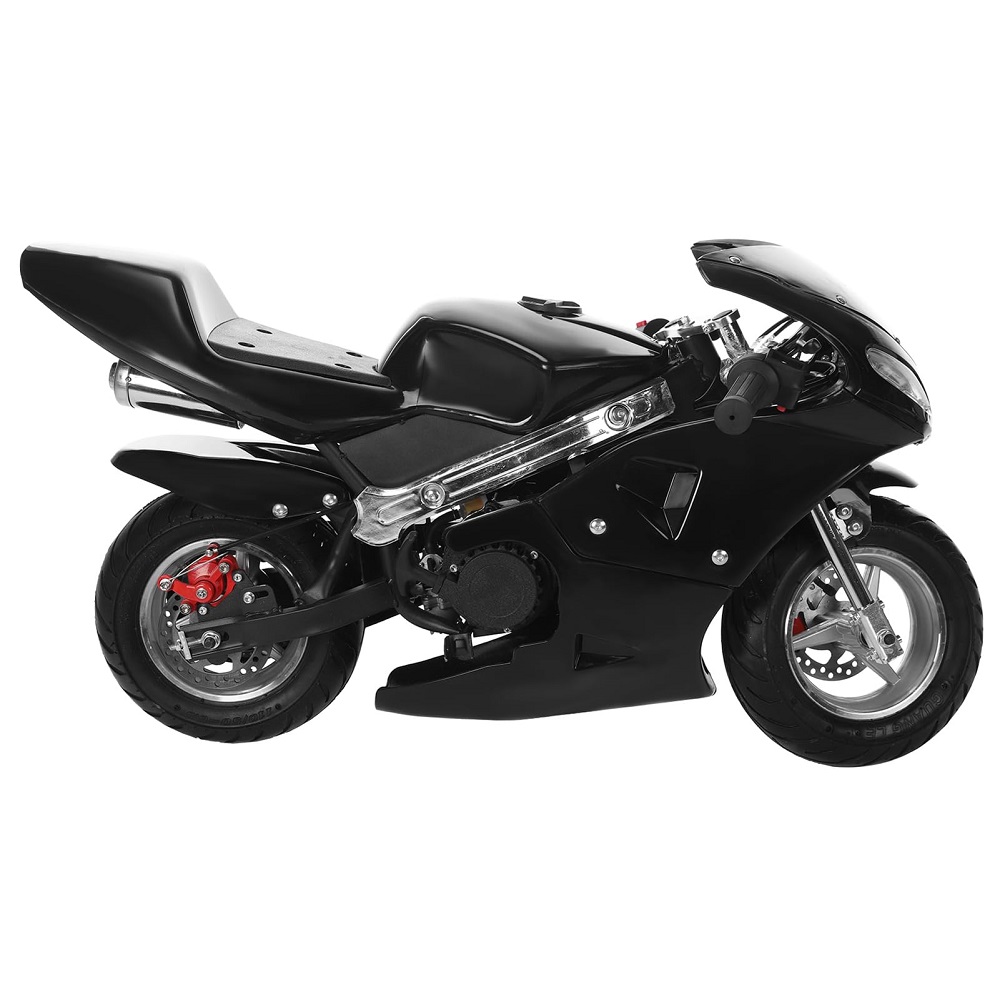
Engine Specifications
Choosing the right engine specifications is critical when selecting a mini motorcycle. Here are some key points to consider:
- Engine Size. The engine’s cubic centimeter (cc) rating tells you about its power. Smaller cc engines are ideal for beginners.
- Engine Type. Mini motorcycles may have two-stroke or four-stroke engines. Two-strokes are lighter and more powerful, but four-strokes are more fuel-efficient and last longer.
- Horsepower. This reflects the engine’s power output. More horsepower means more speed and acceleration.
- Fuel Consumption. Consider the engine’s efficiency and how often you’ll need to refuel.
- Cooling System. Engines come with air or liquid cooling systems. Liquid cooling is better for maintaining engine temperature during longer rides.
Understanding these engine specifications will help you pick a mini motorcycle that matches your riding style and needs. It’s important to align the engine features with where and how you plan to ride. If you’re a new rider, starting with a mini motorcycle that has a smaller engine size and less horsepower might be a good choice. Experienced riders might look for something with more power. Always make sure the mini motorcycle you choose has an engine that’s reliable and suited for your intended use.
Safety Features and Gear
When choosing a mini motorcycle, safety should never be an afterthought. Here’s how to prioritize it:
- Inbuilt Safety Features. Look for bikes with safety enhancements like emergency shut-off switches, speed governors, and secure footing pegs.
- Protective Gear. Always wear a helmet, gloves, jacket, boots, and knee pads to protect against falls and collisions.
- Gear Quality. Select high-quality gear that meets safety standards. It could make all the difference.
- Visibility on the Road. Opt for bikes and gear with reflective materials. They help you stand out in traffic or low light.
- Training. Consider taking a safety course. It teaches you essential riding skills and safety tips.
Enforcing these safety practices can greatly reduce the risk of injury while enjoying your mini motorcycle. Remember, no ride is too short to skip on safety gear, and investing in good safety features can save lives.
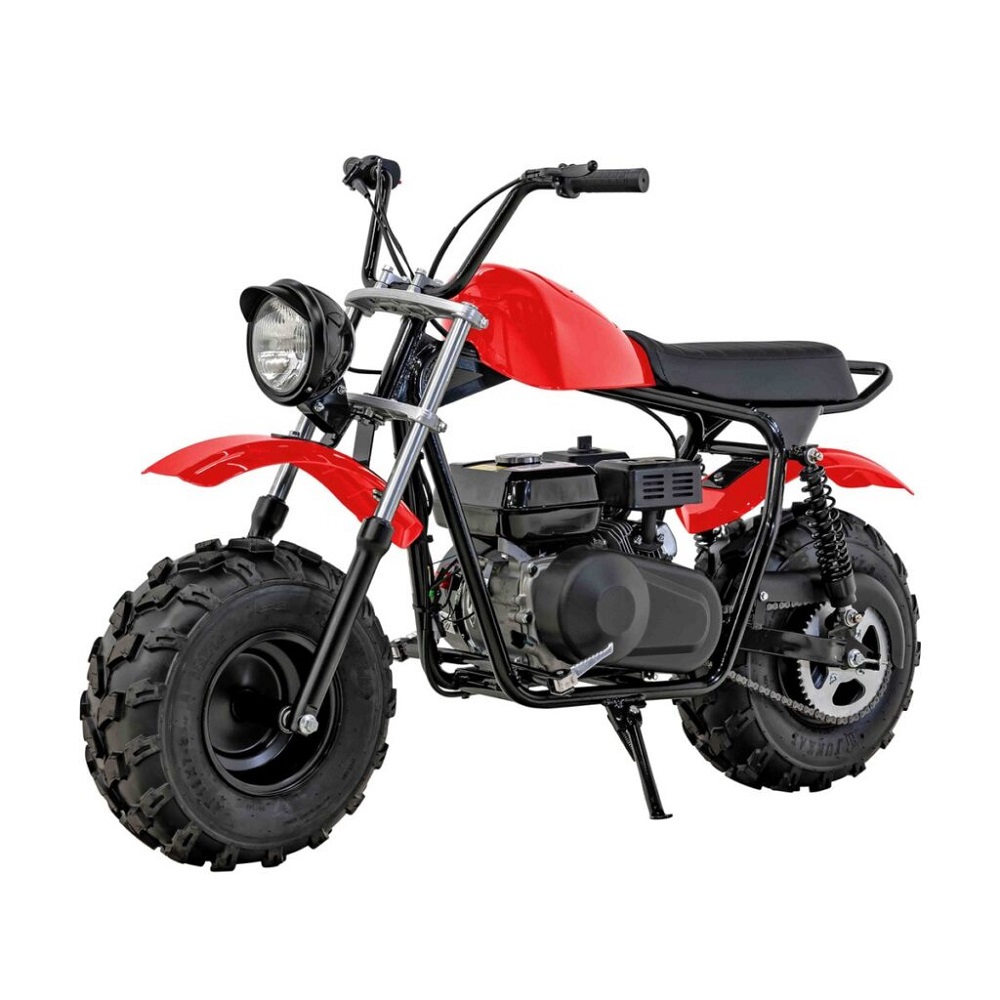
Cost and Budgeting
When planning to buy a mini motorcycle, your budget is a vital factor. Here’s how to manage costs:
- Set a Budget. Decide how much you’re willing to spend before you shop.
- Consider Initial Cost. Look at the price tag, but don’t forget about taxes, registration, and dealer fees.
- Factor in Gear. Include the cost of safety gear in your budget. High-quality helmets, gloves, and jackets add up.
- Account for Maintenance. Regular upkeep, such as oil changes and tire replacements, will impact your longer-term finances.
- Assess Fuel Expenses. Think about how much you’ll spend on fuel. Even mini motorcycles vary in fuel efficiency.
- Resale Value. Consider how well the mini motorcycle will hold its value. This is important if you plan to upgrade later.
By taking into account all these cost-related aspects, you can make a wise financial decision. Stick to your budget, but allow a little flexibility for unexpected expenses. A clear budget will help you narrow down choices and find a mini motorcycle that won’t break the bank.
Maintenance and Upkeep
Regular maintenance and upkeep are crucial for your mini motorcycle’s longevity and performance. Here’s what you need to keep in mind:
- Follow the Manufacturer’s Guidelines. Stick to the service schedule outlined in your bike’s manual.
- Oil Changes. Change the oil frequently to ensure engine health. This is a simple task that goes a long way.
- Chain Maintenance. Keep the chain clean and lubricated to prevent wear and tear.
- Air Filter Care. A clean air filter improves engine efficiency. Check and replace it as needed.
- Tire Checks. Regularly inspect tires for proper inflation and tread wear. This ensures safety and good performance.
- Battery Maintenance. Store the battery properly during off-seasons and keep it charged. A well-maintained battery has a longer life.
- Brake Inspection. Check brake pads and discs regularly for any signs of wear. Your safety depends on it.
- Keep It Clean. Washing your mini motorcycle not only keeps it looking good but also prevents rust.
- Fastener Check. Tighten any loose nuts and bolts. Vibration from riding can loosen them over time.
By paying attention to these aspects of maintenance and upkeep, you’ll ensure your mini motorcycle stays in top riding condition. Be proactive about maintenance; this can save you time and money in the long run and make your rides more enjoyable and safe.
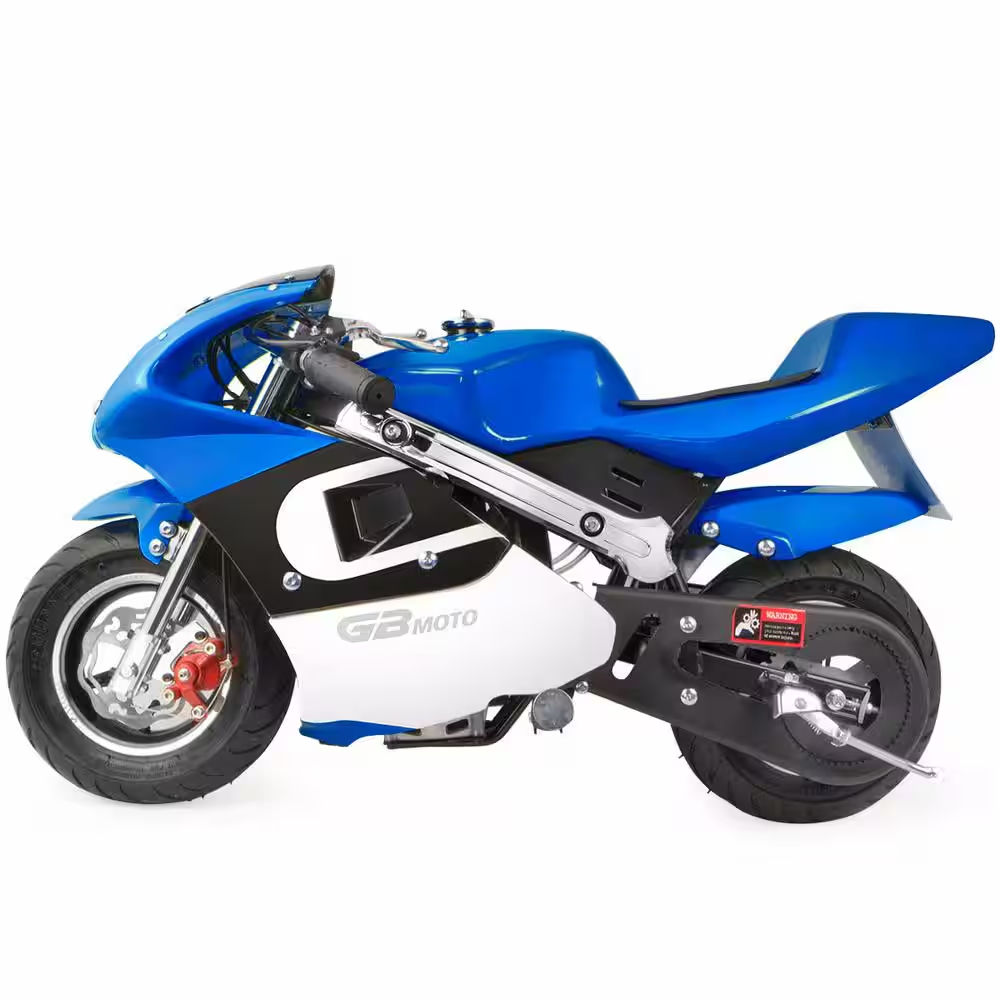
Popular Brands and Models
Choosing a mini motorcycle means considering some of the most reputable brands and sought-after models on the market. To guide your decision, we discuss popular options that are recognized for their quality, performance, and customer satisfaction.
Recognized Mini Motorcycle Brands
When searching for a reliable mini motorcycle, it’s wise to start with brands that have established a solid reputation. Some leading names in the industry include:
- Honda: Known for durability and reliability.
- Yamaha: Offers a mix of performance and innovation.
- Kawasaki: Delivers powerful bikes suitable for various terrains.
- Suzuki: A brand synonymous with motorcycle racing history.
These manufacturers provide a range of mini motorcycles catering to different riding preferences and levels of expertise.
Top-Rated Mini Motorcycle Models
Specific models stand out for their popularity and user reviews. A few of these include:
- Honda CRF50F: Ideal for beginners, with a user-friendly design.
- Yamaha TTR-50E: Features electric start and is perfect for kids and new riders.
- Kawasaki KLX110: A great pick for off-road excursions, offering durability.
- Suzuki DR-Z70: Known for being a solid entry-level dirt bike.
Each of these models offers a unique set of features aimed at enhancing the mini motorcycle experience.
When you’re considering a purchase, take the time to research and compare different brands and models. Look for reviews and feedback from current owners. This can give you an idea of how the mini motorcycle performs in real-life conditions and whether it meets your expectations. Remember, the right choice depends on your personal needs, what you value in a bike, and how you plan to use it. Be sure to weigh the pros and cons of each option and choose one that aligns with your riding goals and the important features you prioritize.
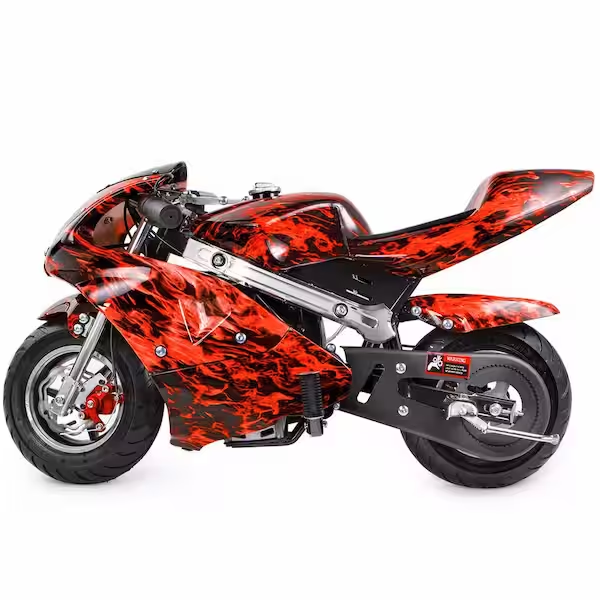
Where to Buy Mini Motorcycles
Finding a place to buy a mini motorcycle is as important as choosing the right model. Here are some options to consider:
- Authorized Dealerships. They offer new models, warranties, and expert advice.
- Online Retailers. Websites provide a broad selection and sometimes better deals.
- Local Classified Ads. You might find used mini motorcycles at lower prices.
- Motorcycle Expos. These events allow you to explore different models and brands.
- Auctions. They can be a source for unique finds or discounted rates.
When buying, always check the seller’s reputation and return policies. If you buy used, inspect the bike thoroughly. Watch out for rust, damage, and signs of poor maintenance. If online, read reviews and ask for detailed photos. Test ride the mini motorcycle, if possible, to ensure it feels right. Finally, compare prices to ensure you’re getting a fair deal.
Conclusion and Final Thoughts
Buying a mini motorcycle involves several important decisions. This guide aimed to navigate key areas to consider. From assessing different types to considering the features, safety gear, and budget, each point is crucial. Size and weight impact comfort and handling. Engine specs align with your riding plans. Safety enhances riding confidence. Costs should match your budget, and maintenance ensures durability. Brand choice relies on reputation and personal preference. Buying locations vary in convenience and price.
Remember these key takeaways:
- Choose a mini motorcycle that fits your size and skill level.
- Prioritize safety features and always wear proper gear.
- Keep maintenance in mind; it extends your bike’s lifespan.
- Stick to your budget but invest in quality where it matters most.
- Research brands and models to find the best fit for your needs.
With careful consideration, you’ll find the right mini motorcycle. It will provide joy, transport, and a gateway to the biking community. Happy riding!
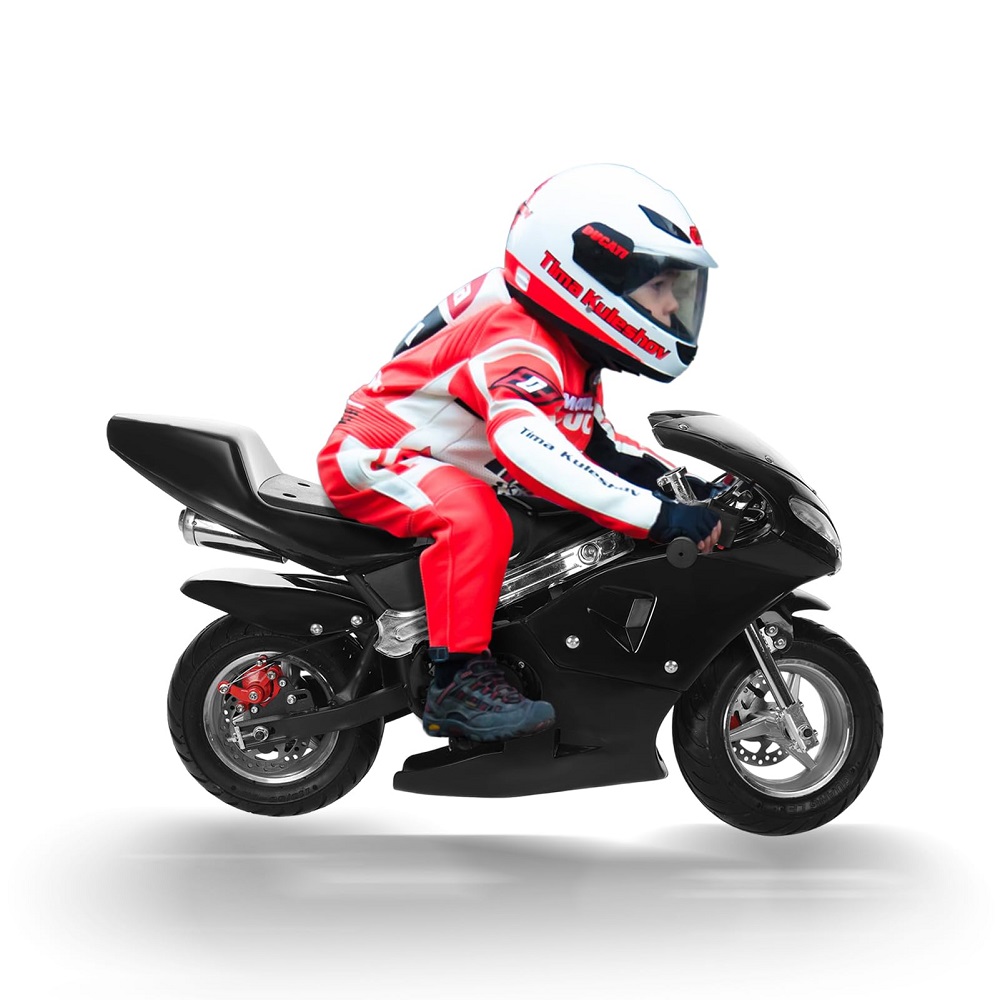
Leave a Reply